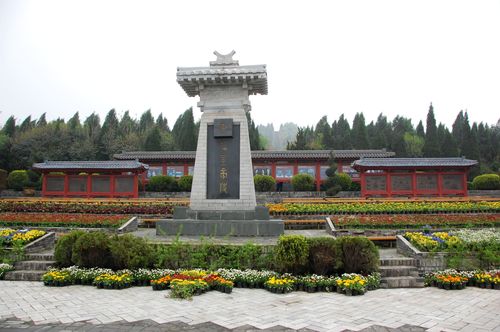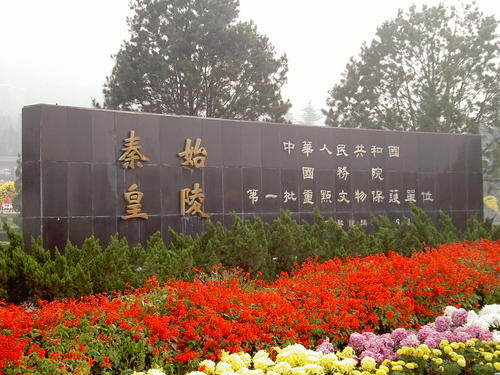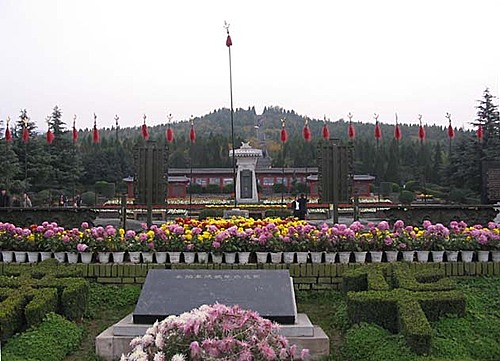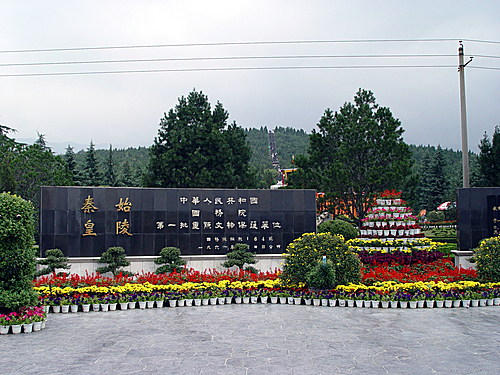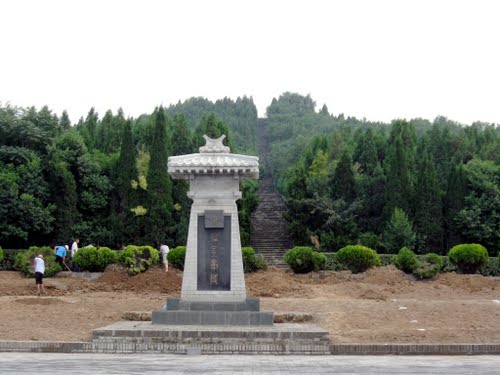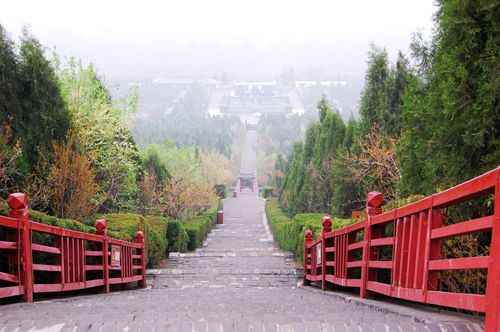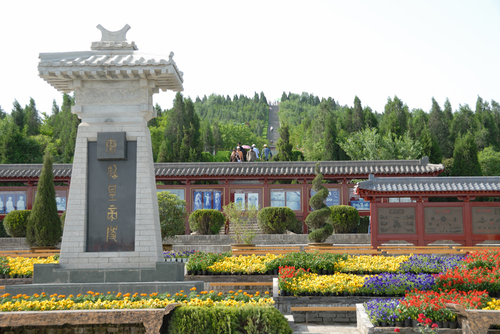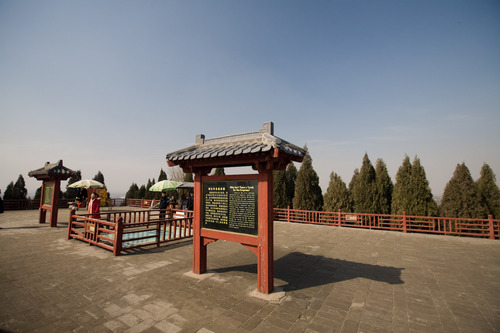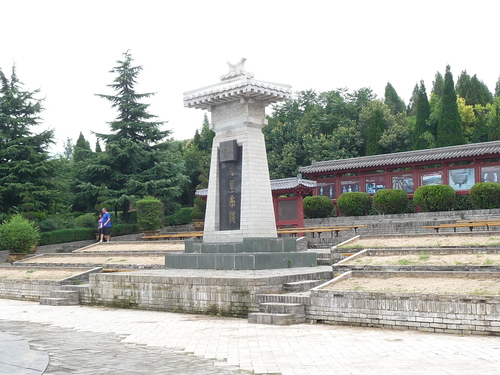The Mausoleum of the First Qin Emperor (Qin Shi Huang) is located in Lintong District, Xi'an, Shaanxi province of China. This mausoleum was constructed over 38 years, from 246 to 208 BCE, and is situated underneath a 76-meter-tall tomb mound. The layout of the mausoleum is modeled on the Qin capital Xianyang, divided into inner and outer cities. The circumference of the inner city is 2.5 km and the outer is 6.3 km. The tomb is located in the southwest of the inner city and faces east. The main tomb chamber housing the coffin and burial artifacts is the core of the architectural complex of the mausoleum.
The tomb itself has not yet been excavated. Archaeological explorations currently concentrate on various sites of the extensive necropolis surrounding the tomb, including the Terracotta Army to the east of the tomb mound. The Terracotta Army served as a garrison to the mausoleum and has yet to be completely excavated.
History
Work on the mausoleum began soon after Emperor Qin ascended the throne in 246 BC when he was still aged 13, although its full-scale construction only started after he had conquered the six other major states and unified China in 221 BC.
Before the Mausoleum of the First Qin Emperor was completed, a peasant rebellion broke out during the late Qin dynasty. Zhang Han redeployed all the 700,000 people building the mausoleum to suppress the rebellion, so the construction of the mausoleum ceased. After Xiang Yu entered Xianyang, he is said to have looted the tomb. Afterwards, it is said that a shepherd unintentionally burnt down the underground palace of the mausoleum. The story goes that he went into a cave of the mausoleum, dug by Xiang Yu, to look for his sheep with a torch in his hand, and a fire was started, burning away all the remaining tomb structures. No solid evidence of this has been found, and some scholars think that the mausoleum did not suffer any large-scale destruction.
In 1987, the mausoleum, including the Terracotta Warriors, were listed as World Heritage Sites.

